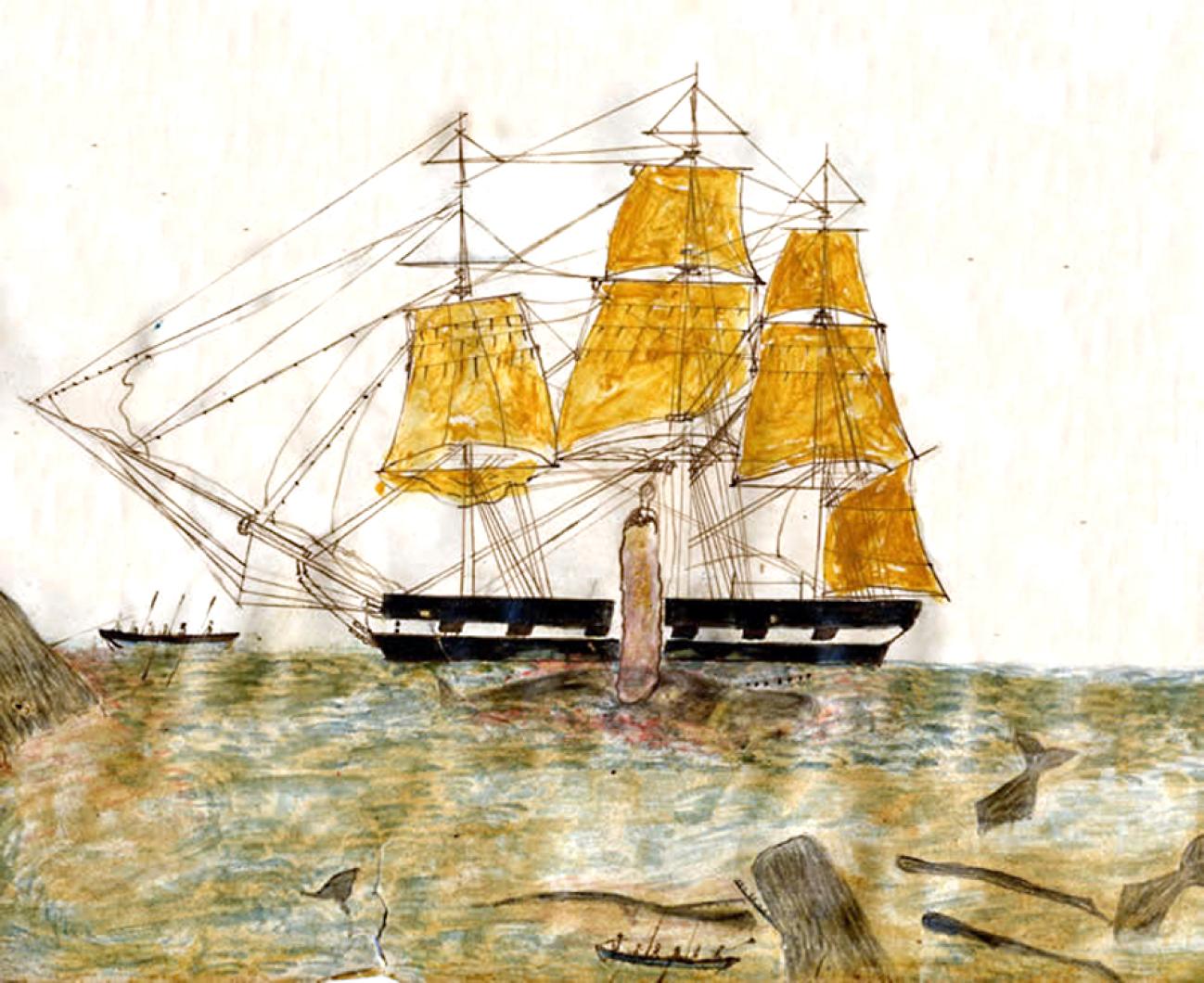“It is Sunday, and a very pleasant day. I have read two story books. This is my journal. Goodbye for today.”
So opened six-year-old Laura Jernegan’s journal, in an entry dated Dec. 1, 1868, as she set sail on a three-year sea expedition with her family aboard the whaling vessel Roman.
The tiny leather-bound journal will be on display as part of the exhibit Laura Jernegan: Girl on a Whale Ship, which opens tonight at 5:30 at the Martha’s Vineyard Museum. And in August, the physical exhibit will expand into cyberspace, when the museum launches a corresponding Web site.
“This is really the piece that the entire exhibit and Web site are built around,” said museum assistant curator Anna Carringer as she held the tiny journal.
“This diary is sort of an amazing thing because it’s a kid’s perspective of a whaling voyage in the 19th century,” said museum education director Nancy Cole.
Laura Jernegan was born in Edgartown to whaling captain Jared Jernegan and his wife Helen. “These whaling voyages were by then three, four years long, and [Captain Jernegan] missed his family terribly. So he took them along, on this particular journey, in 1868,” said Ms. Cole. From ages six to nine, Laura spent most months of the year aboard the Roman, witnessing firsthand the ins and outs of the whaling profession. Home schooled by her mother, Laura began the journal to practice her writing.
“She was away for three years, from 1868 to 1871. And she was not on the ship the whole time, so there are some holes in the journal timewise,” said Ms. Cole. In the summer months, when the whaling fleet followed the whales into the Arctic, Laura, her mother, and her younger brother, Prescott, stayed behind in Honolulu, Hawaii.
But the experiences that were recorded in Laura’s journal offer readers a snapshot of life aboard the ship. “She’s talking about what she’s watching, and the work that the men are doing catching the whales,” said Ms. Cole.
The exhibit will use the journal as a centerpiece to tell the story of what went on before, during, and after the whaling voyage. It will also use Laura’s story to educate people about the whaling industry of the 19th century. “We’re really pulling out elements of the whaling story through her experiences,” said Ms. Carringer. “So we’re talking about, for instance, Edgartown as a whaling port and how the Vineyard was affected by the whaling industry, by talking about Laura’s experiences and what she would have seen. We’re using the things that she described as a vehicle to tell the story of the industry. The different pockets of information as you walk around the exhibit are really what life was like onboard the ship.”
One piece in the exhibit will be a small wooden structure called a child minder, which looks like a more compact playpen, and was used to hold a child while a parent or caregiver worked on other tasks. Ms. Carringer said that while the one on display was almost certainly not used by the Jernegans on their family whaling journey, it did descend through the Jernegan family before it was donated to the museum.
“One of the things that Laura talks about, a lot of the time she was given the responsibility of watching Prescott while her mother did something else. So we’re using this particular collection item, which is also on the Web site, to sort of illuminate the story a little bit,” said Ms. Carringer.
The idea for the Web site came about as a way to combat the space limitations for a physical exhibit in the library. “In an old house, where our galleries are, we’re very limited,” said Ms. Cole. “The Web site is something that allows us to be as big as we want it to be. It’s got a lot more details than we can possibly show here.”
“We want the exhibit and the Web site to be sort of parallel to each other, so that when people go through the exhibit and they want to learn more, they can go home and they can get online,” said Ms. Carringer.
The exhibit will be divided into two parts, the first of which will focus on all of Laura’s adventures at sea. The second will be more interactive, and allow kids to explore the world of whaling. For instance, a cross section of a whaling ship will be painted on one wall. “Kids are going to be able to sort of manipulate the crew members and find out where they go on the ship and learn a little bit more about what the anatomy of a whale ship is,” said Ms. Carringer. The cross section will be even more detailed on the Web site, where kids can scroll the mouse over different sections of the boat to read about their functions, and the stories of people who might have worked and lived there.
Laura’s journey concluded when she and her mother and brother sailed to San Francisco from Hawaii, traveled by train back to the East Coast, and moved back into their home in Edgartown, which is located on the corner of South Summer street and Davis Lane. (Today the house is part of the Charlotte Inn; the large trees that line the street there were planted by Laura’s father.) Captain Jernegan reunited with his family after he’d finished the final leg of the whaling expedition in 1871. Laura grew up to become an artist. She got married and moved off-Island, but returned to the Island after her husband died. “She was an Edgartown girl,” said Ms. Cole.
“Her childhood home and the things that she saw are just steps from the museum, so it’s kind of a neat way for people to continue learning and continue the story,” said Ms. Carringer of the exhibit. “We’re surrounded by it. We’re surrounded by her story and her legacy.”







Comments
Comment policy »